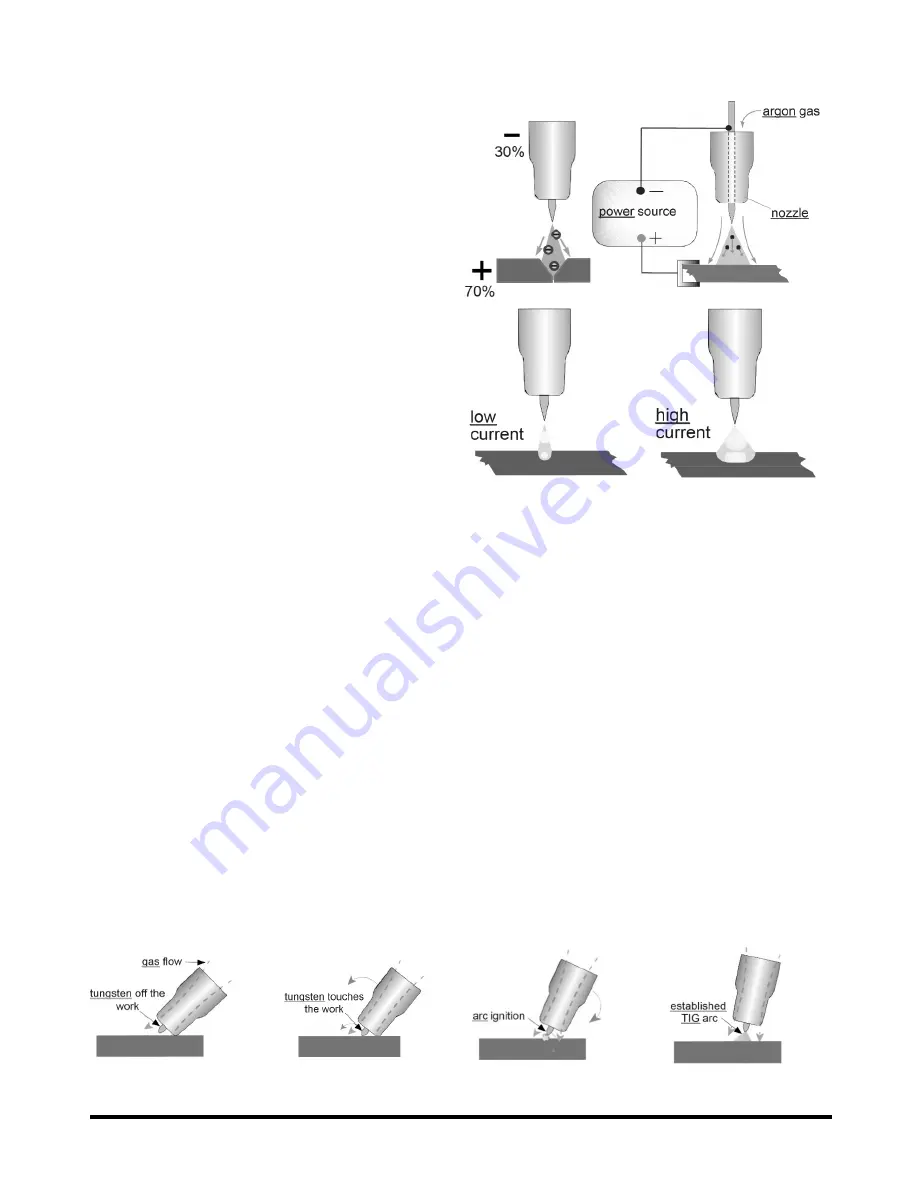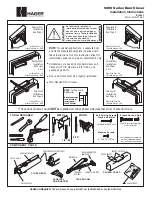
V1.0
180 MULTI-PROCESS MIG-ARC-TIG WELDER
8611311
Visit www.princessauto.com for more information
23
When the TIG arc is struck, the inert gas is ionized and superheated, changing its molecular
structure into a plasma stream. This plasma
stream flowing between the tungsten and the
workpiece is the TIG arc and can be as hot as
18 000 °C (34,232 °F). It is a very pure and
concentrated arc that provides the controlled
melting of most metals into a weld pool. TIG
welding offers the user the greatest amount
of flexibility to weld the widest range of
material and thickness and types. DC TIG
welding is also the cleanest weld with no
sparks or spatter.
The intensity of the arc is proportional to the
current that flows from the tungsten. The
welder regulates the welding current to
adjust the power of the arc. Typically, thin
material requires a less powerful arc with less
heat to melt the material, so less current
(amps) is required (Fig. 48), thicker material
requires a more powerful arc with more heat,
so more current (amps) are necessary to melt
the material (Fig. 49).
LIFT ARC IGNITION FOR TIG (TUNGSTEN INERT GAS) WELDING
Lift Arc ignition allows the arc to be started easily in DC TIG by simply touching the tungsten to
the workpiece and lifting it up to start the arc. When the machine detects that the tungsten has
left the surface and a spark is present, it immediately (within microseconds) increases power,
converting the spark to a full arc.
This prevents the tungsten tip sticking to the workpiece and breaking the tip from the tungsten
electrode. It is a simple, safe lower cost alternative arc ignition process to HF (high frequency)
and a superior arc start process to scratch start. There is a particular technique called ‘rocking
the cup’ used in the Lift Arc process that provides easy use of the Lift Arc function.
1. Open the gas cylinder valve and set the flow between 21 to 30 CFH.
2. Set the welding current using the amperage control dial (D).
3. Make sure the front end parts of the TIG torch are correctly assembled, use the correct size
and type of tungsten electrode for the job, the tungsten electrode requires a sharpened
point for DC welding.
4. Lay the outside edge of the Gas Cup on the workpiece with the Tungsten Electrode 1/16 in.
from the workpiece.
5. With a small movement, rotate the Gas Cup forward so that the Tungsten Electrode touches
the workpiece (Fig. 50 and 51).
6. Now rotate the gas cup in the reverse direction to lift the tungsten electrode from the
workpiece to create the arc (Fig. 52 and 53).
Fig. 46
Fig. 47
Fig. 48
Fig. 49
Fig. 50
Fig. 51
Fig. 52
Fig.
















































